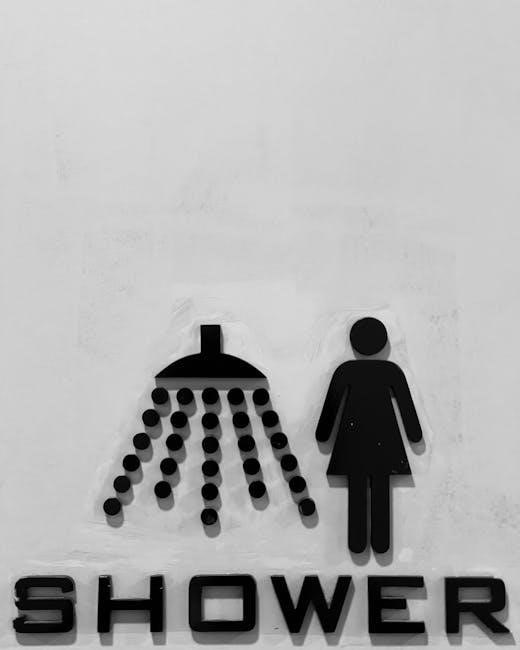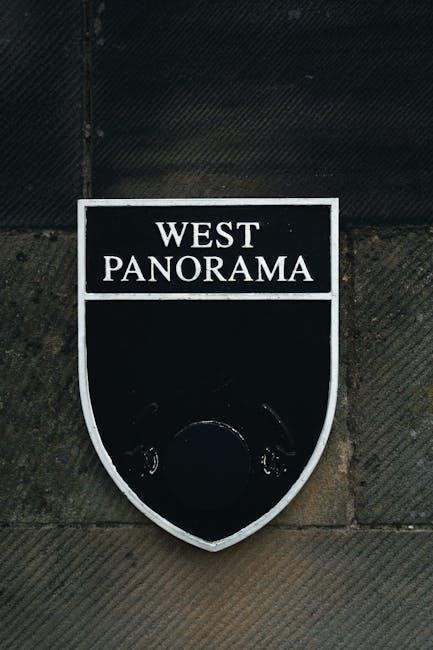Article Plan: Gender: A Graphic Guide
This article offers a structured exploration of “Gender: A Graphic Guide,” dissecting its contents, impact, and reception. It covers the authors, key themes, format, reviews, and relevance to contemporary gender discussions and studies.
In contemporary society, understanding gender is more crucial than ever, given the ongoing conversations about identity, equality, and social justice. Meg-John Barker and Jules Scheele’s “Gender: A Graphic Guide” emerges as a vital resource, offering an accessible and visually engaging exploration of complex gender concepts. This graphic novel condenses a gender studies course into an approachable format, aiming to broaden understanding and encourage critical thinking about traditional gender norms. It delves into multiple meanings, challenging binary thinking and prompting reflection on how gender intertwines with other societal structures, making it an essential read.

Overview of “Gender: A Graphic Guide”
“Gender: A Graphic Guide” is an illustrated journey that explores gender’s multiple facets. It challenges binary thinking and questions social constructs. The book is accessible and thought-provoking for a wide audience.
Authors and Illustrators: Meg-John Barker and Jules Scheele
Meg-John Barker, a writer, therapist, and academic activist specializing in sex, gender, and relationships, brings their expertise to this guide. They are known for accessible works on these complex topics. Jules Scheele, the illustrator, is a comic artist and graphic facilitator, co-running Ghost Comics Festival. Scheele’s visual storytelling enhances the book’s clarity and impact, making it an informative and engaging experience. Together, they create a powerful combination of expertise and artistic skill, crafting a book that is both educational and visually compelling.
Purpose of the Book: Exploring Gender Concepts
The book aims to provide a comprehensive yet accessible introduction to gender studies, utilizing a graphic novel format for broad appeal. It seeks to unpack complex issues surrounding gender identity, expression, and societal constructs, employing plain language and visual aids. By questioning social norms and perceived truths, the book encourages critical thinking. Ultimately, “Gender: A Graphic Guide” intends to inform readers about gender’s multifaceted nature, fostering a deeper understanding. This understanding promotes inclusivity and challenges binary thinking.

Key Themes Explored in the Book
The graphic guide delves into core themes such as challenging societal constructs around gender. It also deconstructs binary thinking and explores intersectionality. These elements provide a comprehensive understanding of gender’s complexities.
Challenging Social Constructs of Gender
“Gender: A Graphic Guide” encourages readers to question the social constructs they often take for granted. The book analyzes perceived norms that shape views on gender, urging consideration of wider, lived experiences. It dissects how societal expectations influence individual identities. By prompting critical thinking, the graphic guide aims to dismantle rigid frameworks and promote a more inclusive understanding of gender. The work further highlights how gender intersects with other systems.
Deconstructing Binary Thinking
“Gender: A Graphic Guide” actively works to deconstruct binary thinking surrounding gender. The book challenges the traditional either/or mentality. By exploring multiple meanings and perspectives, the graphic novel encourages readers to move beyond rigid classifications. It promotes a more nuanced comprehension of gender as a spectrum. This approach acknowledges the fluidity and complexity inherent in gender identity. Ultimately, the book seeks to dismantle limitations imposed by binary constructs, fostering a more inclusive understanding of gender.
Intersectionality of Gender with Other Systems
“Gender: A Graphic Guide” examines the intersectionality of gender with other systemic issues. These include capitalism, white supremacy, patriarchy, racism, classism, ableism, and heteronormativity. The book recognizes that gender cannot be separated from these intersecting oppressions. This holistic approach acknowledges how various forms of discrimination compound and affect individual experiences. By addressing intersectionality, the guide offers a deeper understanding of gender’s complexities within broader social structures. It highlights the importance of considering multiple identities when analyzing gender dynamics and inequalities;

Content and Structure
“Gender: A Graphic Guide” utilizes a graphic novel format to present complex gender concepts. It employs plain language, visuals, and quotes from activists. This approach makes the information accessible and engaging for a wide audience.
Format: Graphic Novel Approach
The book employs a distinctive graphic novel format, making complex concepts approachable and engaging for a broader audience. This visual medium allows for creative explanations of intricate ideas related to gender. The illustrations, coupled with concise text, work together to enhance understanding and retention. This method moves beyond traditional academic texts, offering a dynamic and accessible learning experience. The graphic novel approach is effective in simplifying and visualizing abstract theories, making the book appealing to readers of all backgrounds interested in exploring gender studies.
Plain Language and Accessibility
One of the strengths of “Gender: A Graphic Guide” lies in its use of plain language, avoiding jargon and complex terminology that can often make gender studies feel inaccessible. The book aims to reach a general audience by presenting information in a clear, straightforward manner, ensuring that readers without prior knowledge can easily grasp the concepts. This focus on accessibility makes the book an ideal introductory resource for anyone curious about gender, sexuality, and related issues, fostering broader engagement with these important topics across diverse demographics.
Use of Visuals and Quotes
“Gender: A Graphic Guide” effectively employs visuals as a core element, enhancing understanding and engagement with the subject matter. The graphic novel format allows for complex ideas to be presented through illustrations, diagrams, and visual metaphors, making them more digestible for readers. Furthermore, the book incorporates quotes from key activists and thinkers, grounding the discussions in real-world perspectives and historical context. This combination of visuals and quotes enriches the learning experience and adds depth to the exploration of gender concepts, offering multiple entry points for different learning styles.
Critical Reception and Reviews
The book has garnered praise for its clarity and accessibility in explaining complex gender issues. However, some critiques focus on perceived ideological biases within the presented information and perspectives.
Praise for Clarity and Informativeness
Reviewers frequently commend “Gender: A Graphic Guide” for its exceptional clarity in elucidating intricate gender concepts. The book is celebrated for presenting a condensed gender studies course in an accessible format, utilizing plain language that resonates with a broad audience. Its graphic novel approach is lauded for making complex topics digestible, offering readers a solid introduction to gender and sexuality. The combination of text and visuals is seen as a powerful tool for conveying information, making it an ideal starting point for those interested in exploring gender issues.
Critiques of Ideological Viewpoints
While widely praised, “Gender: A Graphic Guide” has faced criticism for what some perceive as an overly narrow, ideological perspective on gender. Some critics argue that the book seems overly attached to a specific viewpoint, potentially limiting a balanced exploration of diverse perspectives within gender studies. Detractors suggest that the book presents gender as inherently problematic, possibly influenced by a particular feminist lens. This has led to debates about the book’s objectivity and its potential to present a comprehensive understanding of gender beyond a specific ideological framework.
Comparison to Other Graphic Guides by the Authors
“Gender: A Graphic Guide” is often compared to Meg-John Barker and Jules Scheele’s other works, such as “Queer: A Graphic History” and “Sexuality: A Graphic Guide.” Similar to these books, “Gender” employs a graphic novel format to distill complex concepts into accessible information. Reviewers note that all three guides share a clear and succinct writing style, making them suitable for a broad audience. The books are also consistent in their use of visuals and quotes to enhance understanding, establishing a recognizable style for the authors’ educational graphic guides.

Impact and Relevance
The book serves as an accessible introduction to gender studies; It sparks thought and discussion on contemporary issues. It questions social constructs and perceived norms. It considers a wider lived experience.
“Gender: A Graphic Guide” effectively condenses a gender studies course into an accessible format. The book employs plain language and illustrations, making complex concepts understandable for a broad audience. It serves as a starting point for individuals interested in exploring gender issues. It offers an introductory course into gender and sexuality. The graphic/informal style of the book is incredibly informative and beautifully illustrated. It pulls quotes from key activists. It packs a serious punch. It is a great introduction to the topic.
Sparking Thought and Discussion
“Gender: A Graphic Guide” encourages readers to question social constructs and perceived norms; It challenges binary thinking about sex and gender, prompting critical reflection. The book asks the reader to consider the wider lived experience. By addressing complex issues clearly, it facilitates discussions about gender identity, roles, and societal expectations. This book is a great combination to explain complex issues. It serves as a starting point if you are interested in gender issues. It is an excellent introduction to gender theory.
Relevance to Contemporary Issues
“Gender: A Graphic Guide” is highly relevant in today’s world, where gender identity and expression are central to social and political discussions. The book addresses topics like toxic masculinity and the impact of feminism, providing context for current debates. It helps readers understand how gender intersects with capitalism, white supremacy, and other systemic issues. The guide promotes critical thinking about gender roles, intersectionality, and societal norms, making it essential for navigating contemporary challenges.
“Gender: A Graphic Guide” effectively simplifies complex gender concepts through visuals and plain language. It is highly recommended for those seeking an accessible introduction to gender studies and related contemporary issues.
The book’s strength lies in its ability to distill intricate gender theories into an accessible and engaging format, aided by clear visuals and plain language. It serves as an excellent introductory course, packing a punch with quotes from activists and key thinkers. The graphic novel approach enhances comprehension, making it a valuable starting point for anyone interested in exploring gender issues. Its comprehensive analysis encourages questioning of social constructs, broadening understanding of lived experiences. The book is informative and beautifully illustrated.
Recommendation for Readers Interested in Gender Issues
For readers seeking an approachable and informative entry point into gender studies, “Gender: A Graphic Guide” is highly recommended. It is particularly beneficial for those who appreciate visual learning and plain language explanations of complex concepts. This book serves as an excellent foundation for understanding gender, sexuality, and related social constructs. It encourages critical thinking and offers a comprehensive overview, making it suitable for both beginners and those looking to refresh their knowledge. Its accessibility makes it a valuable resource.
